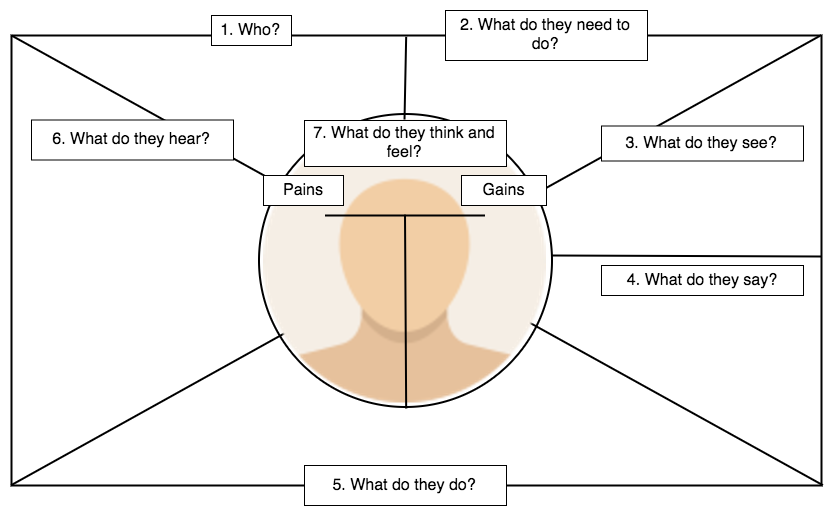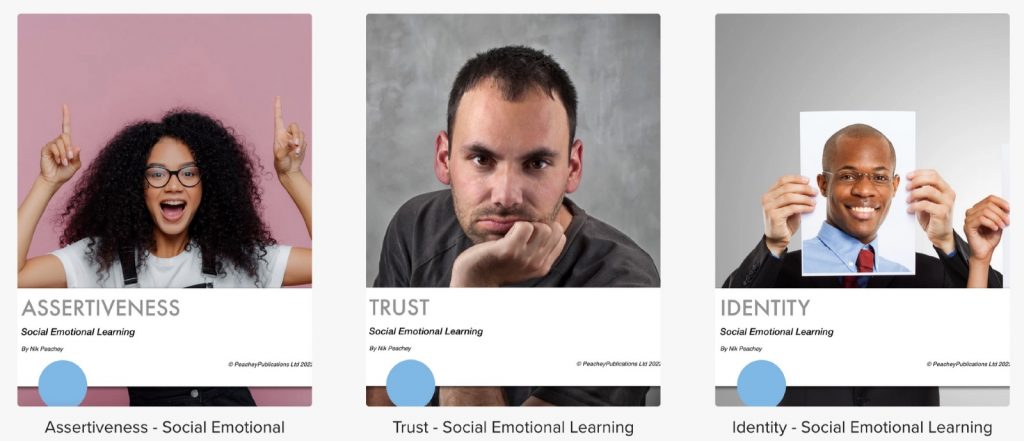In a recent webinar that I delivered for the British Council on Emotional Intelligence and Coaching, I introduced the concept of Empathy Mapping. This caused quite a stir and many people were quite excited by the prospect of having a tool that enabled the development of empathy, although for many the empathy mapping process was hard to grasp within the confines of a webinar. So in this post, I’d like to expand on some of the aspects of this tool and how to use it.
- Firstly, why empathy? There are many reasons why we would all benefit from developing a little more empathy. Empathy is defined as ‘the ability to understand and share the feelings of another.’ This is something that’s becoming increasingly necessary in a world that seems polarised by intolerance and a lack of cultural understanding and sympathy. Having a greater sense of empathy with an understanding of the people around us can also help us to develop more productive and positive relationships and help reduce personal conflicts.
- Within our more closely defined context of the teaching and teacher training classroom, a greater sense of empathy can help us understand the challenges of our students and trainee teachers and help our students better understand and empathise with those around them.
- The process of empathy mapping has an unlikely origin in product development and was originally designed to help companies understand the needs of their customers (See Gamstorming: http://gamestorming.com/empathy-map/ ), but can very easily be adapted to the teaching and training classroom to help us better understand the people we are working with, their pains and their motivation.
So this is an empathy map and this is how it works.

To use the map you should move around it from 1 to 7 trying to understand your subject and fill in the relevant information.
- Who?
You should decide who it is you want to understand and empathise with. This doesn’t have to be a single person, though it can be very useful if you have particular student or trainee that you find challenging or who needs extra help, it can also be a group of people or a persona. So for example, if you are planning a training course you could use it to start understanding the needs of your trainees as a group, before getting to know them better as individuals. - What do they need to do?
At this point, you need to think about their goal in relations to your course, what they do, what they need to do and what they need from you. - What do they see?
At this point you need to think about what they see around them in relation to this goal, so, for example, an English student may see other people with better English getting better jobs. An experienced teacher may see more teachers and students using technology and be influenced by this. Try to think of as many things as you can that could be influencing them in relation to their goal. - What do they say?
At this point, you need to think about what they are saying in relation to the goal. What are they saying to you and what are they saying about their goal to others? What can you imagine them saying? - What do they do?
At this point, we need to think about what they do. What kinds of behaviour have we observed them doing? What do they do that they may want or need to change? What can we imagine them doing in their day to day context? - What do they hear?
At this point, you need to think about what they are hearing others say. What are their colleagues and friend saying? What do they hear ‘second-hand’? - What do they think and feel?
Finally, at point 7 you should be able to pull all this information together and it should inform you about the fears and frustrations (Pains) and their hopes, dreams and beliefs (Gains) for the future.
Tasks and Activities
We can use the empathy map in a number of ways.
- You can use it to better understand either the individuals or groups you are teaching or you could use it with a particularly challenging student, to better understand the causes of their behaviour.
- We can also use it as a learning tool for our students and get them to create empathy maps. They could create empathy maps about the characters in the stories or literature they are reading. In longer texts, they can gradually build empathy maps for each of the characters in the story as they gather more information.
- We can get students to create empathy maps about people in the news to help them better understand the world around them and the motivations people may have for the things they do.
Whether we like or agree with the things the people around us do, having empathy and greater understanding for why they do things will help us and our students better understand the world and so be better able to deal with it and so influence change in themselves and the people around them.
Develop students’ social and emotional intelligence with these lesson plans


